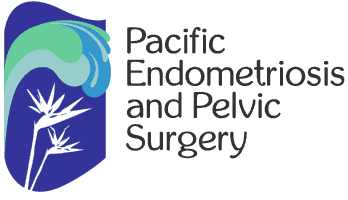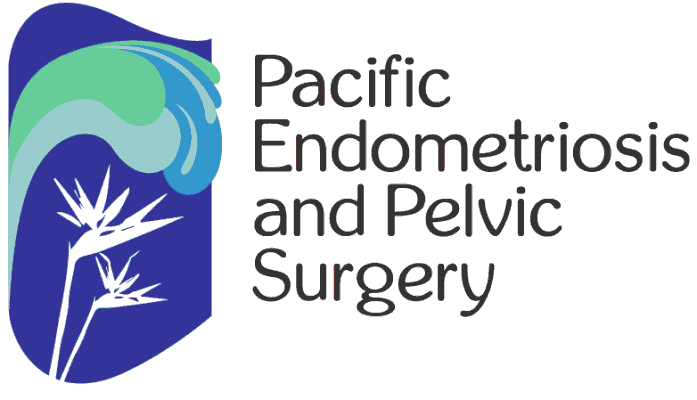What is excision of endometriosis and why is it different? Let’s take a step back and look at the history of surgical approaches to endometriosis.
Way back in the dark ages before laparoscopy and lasers, all surgery consisted of cutting a patient open and removing their disease. This approach has been used to treat endometriosis since the 1800s, and a prominent gynecologic surgeon, Dr. Joe Meigs wrote in the 1950s about excision: “…recurrence is not frequent, and cure…by conservative surgery is usual.” From the turn of the century until the 1970s, endometriosis was much less frequently diagnosed than it is now, but more likely to be removed when it was found.
Then a wonderful thing happened in the 70s and 80s- no, not disco, Laparoscopy! This radical new approach allowed surgeons to operate on structures deep inside the body using only tiny little holes through which a telescope and operating instruments were placed. Laparoscopy allowed for better visualization of the deepest part of the pelvis where endometriosis likes to live- behind the uterus in the culdesac which can be very hard to see in open surgery. Along with the development of vision through tiny little incisions came new instruments such as lasers and new techniques such as ablation of endometriosis. Since surgery was less invasive, it became less risky to perform, and the concept of a diagnostic laparoscopy was born. This allowed doctors to recognize endometriosis more, but the methods they were using to treat it hadn’t yet been verified. Early studies of endo and laparoscopy were mostly focused on infertility rather than pain relief, and even though no studies showed significant long-term pain relief, ablation (burning) of lesion using either cautery (electricity) or laser (light energy) became standard treatment, alongside Danazol and later Lupron. Despite little to no evidence to justify these methods, in my residency in the early 1990s, laparoscopy with ablation of endo followed by Lupron was taught as “THE way” to treat endometriosis. Subsequent to it’s acceptance as standard of care, some studies were done to assess pain relief after ablation surgery. In 2001, Jones, et.al. looked at 6 year followup of laser ablation for stage 1 and 2 disease and found that 74% of patients had recurrence of pain at an average of 20 months. In 2005, Wright, et al, studied stage I disease comparing ablation with excision , and at 6 months postop, the results were equivalent. There are no studies looking at ablation for stage IV disease.
So, two generations of gynecologists have been taught how to treat endometriosis based on first no data, then on data that shows that the standard techniques don’t work well. This is why most GYNs say that endo can’t be cured, that it always comes back, and that when it does recur the only thing to do is a hysterectomy and oophorectomy (removing ovaries, inducing permanent menopause).
My oh my what a predicament for women with pelvic pain….
Fortunately, there is another option. Excision of endometriosis is the technique by which the disease is removed by cutting it out. There are many ways to accomplish this- some use lasers, some use cautery, some use robots – the tools that a surgeon uses to facilitate excision really don’t matter, but what does is that all disease is removed entirely no matter where it is. Excision allows us to remove endometriosis that lies over the ureters and on the bowel – places where it’s not safe to just burn the disease. Excision also lets us remove the disease and leave in the reproductive organs to both preserve fertility and avoid castration of young women that can cause a lifetime of hot flashes, bone loss, sexual dysfunction, vaginal atrophy, memory loss…. I could go on and on.
Excision has been studied quite extensively, and many different studies from around the world have shown very consistent results. Redwine published his outcomes in 1991 after laparoscopic excision of endometriosis where he followed those patients for up to 7 years postop. About half had no further pain and no reasons for subsequent surgery, and the other half required another surgery for various indications- pain, bleeding, masses, etc. He showed a 57% cure rate in reoperated patients, and a 19% incidence of recurrence or persistence among all patients who underwent excision (this assumes no recurrences in the pain-free patients who didn’t have another surgery). Several other studies showed very similar results (Wheeler, Malinak; Varol et al). Recently there was a study published by Heaney in 2010 that randomized patients to excision vs ablation. Despite several problems with the study (not enough patients, non-expert surgeons- residents- performing the excision, higher stage patients in the excision group), there were trends towards much better pain relief in the excision group. They looked at decreases in pain scores at 1 and 5 years postop in various categories, and in nearly all areas (back pain, rectal and defecation pain, nausea, bloating, dyspareunia) the excision group did much better. Since they designed the study for 75 patients in each group but wound up with only 50, it was underpowered which means that even though there were clear differences between the groups in terms of outcomes, they didn’t reach statistical significance. I believe that if this study was redone with the full numbers of patients to power it correctly it would have shown a “significant” difference, thus carrying more weight in the scientific community. To me it still shows that excision is better.
So, to summarize, the published data show a 19% chance of persistent or recurrent endometriosis after excision surgery by an expert, and a nearly 60% chance of a surgically proven cure, meaning that at a subsequent surgery no endometriosis was found. There is a big difference in the ability to remove all endometriosis between a surgeon who does 15-25 major endometriosis excision cases a month and those who dabble in it, so these results will not translate to all surgeries that are called excision. To be clear, there are many gynecologists who mean well and truly believe that excision of endometriosis is the best way to treat the disease, and they can often do a good job on superficial disease and endometriomas. The challenge is that deep disease is technically much more difficult to remove and requires significantly more skill by the surgeon, which is why it is very important who actually does your surgery. This is probably the main reason why there are so few expert excision surgeons, along with the fact that there is no national organization championing the need for it, or sponsoring fellowship training for excision.

